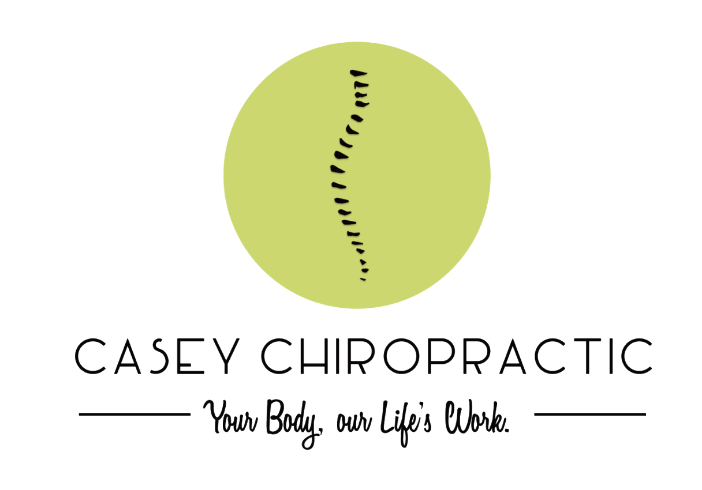Casey Chiropractic FAQs
Common Questions Answered
What is a Chiropractic adjustment?
There are many ways to adjust the spine. Usually the chiropractor’s hands or a specially designed instrument delivers a brief and highly-accurate thrust. Some adjusting methods are quick, whereas others require a slow, constant or indirect pressure.
After years of university training and clinical experience, each chiropractor becomes highly skilled in the delivery of a variety of adjusting approaches.
Do I need a referral from my GP to see a chiropractor?
What is the difference between Chiropractic, Osteopathy and Physiotherapy?
Chiropractic is a health care discipline based on the scientific premise that the body is a self-regulating, self-healing organism. The practice of Chiropractic focuses on the relationship between structure (primarily the spine, and pelvis) and function (as coordinated by the nervous system) and how that relationship affects the preservation and restoration of health.
Physiotherapy, as described by the Australian Physiotherapy Association, “uses a variety of techniques to help your muscles and joints work to their full potential. It can help repair damage by speeding up the healing process and reducing pain and stiffness.”
Osteopathy as described from ‘Osteopathy; The Art of Practice’ “As: When blood and lymphatics flow freely, the tissues can perform their physiologic functions without impedance. With the occurrence of trauma (physical or emotional), the tissues contract, twist, and compress and fluid flow becomes obstructed. Micro-climates of under perfusion result, and are considered to be a significant contributor to the onset of disease. Osteopathic manipulation restores freedom in the tissues, normalizes fluid flow and thus inherent physiologic function (healing) follows”.
Each individual is different and must make their own choice about the most appropriate method of care for them. We believe Chiropractic, with its central focus on the spine, nervous system and their impact on entire body provides a health care option that can help manage pain as well as assist in achieving optimal well-being.
Is Chiropractic appropriate for all ages?
Am I too old for Chiropractic care?
Some patients seek chiropractic care only when their ache or pain becomes unbearable. While this style of “crisis management” is usually more costly and time consuming, chiropractors stand ready to help all patients, regardless of their health goals. How long you decide to benefit from chiropractic care is always up to you.
What type of education to Chiropractors get?
The science of chiropractic requires a special emphasis on anatomy, physiology, pathology, neurology, biomechanics, X-ray, spinal adjusting techniques, and other related subjects. These studies educate chiropractors to locate your spinal problems so they can help correct the resulting nervous system dysfunction. Before any chiropractic student graduates, they must pass demanding written and practical examinations by a panel of their peers. Then, they apply to a Government registration board and are reviewed before being granted the privilege to practice.
We believe education is a life long journey and we gladly commit to give up our weekends to continue learning to serve you better.
Do Chiropractic adjustments hurt?
Whatever the technique, Chiropractors use skill, not force or strength, to conduct a safe, effective adjustment.
Is a good work-out the same as getting adjusted?
Do Chiropractors only fix backs and necks?
Beside ‘fixing’ backs and necks, Chiropractors are also involved in the treatment and rehabilitation of all types of joint injuries including feet, ankles, knees, hips, hand, elbow and shoulder complaints.
Can Chiropractic help sporting injuries?
Sporting teams from many codes now regard chiropractic both as an essential presence when participating in competitive events and an important service in the rehabilitation of their players. SCA also holds regular review and education sessions, which allow chiropractors to be at the forefront of advancement of sports injury related therapy.
Can I have Chiropractic care after back surgery?
Can patients with osteoporosis get Chiropractic care?
Chiropractic adjustment consists of a specific force, applied in a specific direction, to a specific joint. Therefore, it is impossible for people to adjust themselves. Some people manipulate themselves. This process carries with it its own risks and dangers. The most common of these is to cause hyper-mobility to the joint in question (often above or below the actual restricted joint) due to excessive “popping” of the joint. This can cause many later problems, and can be difficult to reverse. While it may feel nice at the time, the subsequent laxity (looseness) of ligaments and other structures can be difficult to manage later down the track.
Want to refer a friend or family member?
Casey Chiropractic is a referral based practice. We welcome the opportunity to assist your friends and family members, contact the office today on (03) 5996 8222 to find out more.
Still have questions? Don’t see the information that you were looking for? Don’t hesitate to contact us on (03) 5996 8222 or via email, we would be happy to help.
CONTACT US
References:
1. Chiropractic in New Zealand: Report of the Commission of Inquiry. (1979). Hasselberg PD, Government Printer, Wellington, New Zealand
2. Dabbs,V., & Lauretti,W.J. (1995). A Risk Assessment of Cervical Manipulation vs NSAIDs for the Treatment of Neck Pain. Journal of Manipulative and Physiological Therapeutics, 18(8), 530-536

